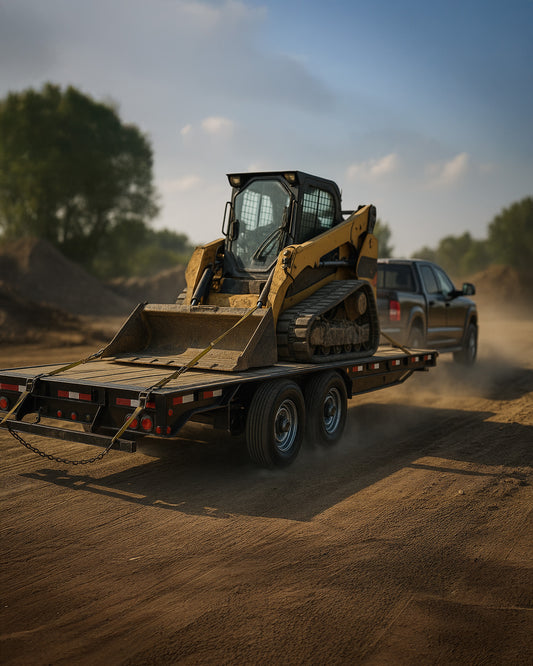

In the realm of RV travel, the significance of maintaining proper tire pressure cannot be overstated. A tire pressure monitoring system (TPMS) serves as an essential tool that aids in the prevention of tire-related incidents, which can lead to catastrophic failures while on the road. Understanding the importance of these systems is crucial for ensuring both safety and optimal performance during your journeys.
When tire pressure is too low or too high, it can lead to a variety of issues, including:
- Increased tire wear: Under-inflated tires can wear out faster and unevenly, leading to the need for premature replacements.
- Reduced fuel efficiency: Improper tire pressure can cause your vehicle to work harder, resulting in increased fuel consumption.
- Compromised safety: Overheating and blowouts are significant risks associated with incorrect tire pressure, posing dangers not only to the driver but also to other road users.
By investing in the best tire pressure monitoring system for RV, you gain real-time insights into your tire conditions, allowing you to address any issues before they escalate. Moreover, a good TPMS will alert you to significant changes in pressure, helping you take immediate action.
For peace of mind while towing, consider how a reliable monitoring system can enhance your safety. Tow with peace of mind, knowing that trailerwatchdog is standing guard.
Key Features to Look for in a RV Tire Pressure Monitoring System

When selecting the best tire pressure monitoring system for RV, it’s essential to recognize the key features that can significantly enhance your driving experience and safety. A well-equipped TPMS not only ensures accurate monitoring but also provides peace of mind during your travels. Here are some critical features to consider:
- Real-Time Monitoring: Look for a system that provides continuous, real-time updates on tire pressure and temperature. This feature helps you keep track of your tires’ conditions as you drive.
- Wireless Technology: Opt for a TPMS that utilizes wireless sensors to eliminate the need for complicated wiring. This makes installation easier and reduces the risk of mechanical failures.
- Multiple Tire Support: A good RV TPMS should support multiple tires, accommodating not just the main vehicle but also any trailers being towed. This ensures comprehensive monitoring across all your wheels.
- Audible and Visual Alerts: Choose a system that offers both visual and auditory alerts for low tire pressure or high temperature. This dual alert system ensures you won’t miss critical warnings while driving.
- Durability and Weather Resistance: Given the nature of RV travel, the TPMS should be rugged and weather-resistant to withstand various environmental conditions.
By focusing on these essential features, you can ensure that your tire pressure monitoring system is reliable and effective, ultimately enhancing your overall travel experience.
Top Tire Pressure Monitoring Systems for RVs Reviewed
Choosing the right tire pressure monitoring system (TPMS) is crucial for ensuring a safe and enjoyable RV experience. Below, we review some of the top tire pressure monitoring systems for RVs available on the market today, highlighting their features, pros, and cons:
- TPMS Brand A: This system offers real-time monitoring for up to 10 tires, making it ideal for larger RVs and towed trailers. The user-friendly display provides clear visual alerts for pressure and temperature changes, while the wireless sensors make installation a breeze. Pros: Easy installation, multiple tire support. Cons: Slightly higher price point.
- TPMS Brand B: Known for its durability, this TPMS is designed to withstand harsh weather conditions. It features both visual and auditory alerts and can track up to 6 tires. Pros: Rugged design, reliable alerts. Cons: Limited tire support compared to competitors.
- TPMS Brand C: This budget-friendly option provides essential monitoring features without breaking the bank. It supports 4 tires and has a straightforward display interface. Pros: Affordable, easy to use. Cons: Lacks advanced features like temperature alerts.
- TPMS Brand D: A premium choice, this TPMS features advanced analytics and real-time data synchronization with your smartphone. It includes GPS tracking and can monitor up to 12 tires. Pros: High-tech features, smartphone integration. Cons: Higher cost and may require a learning curve for some users.
Each of these systems has its unique strengths and weaknesses, catering to different needs and budgets. Evaluating these options will help you find the best fit for your RV adventures.
Protect your trailer
How Tire Pressure Affects RV Safety and Performance

The importance of maintaining proper tire pressure in your RV cannot be overstated. Tire pressure directly influences both safety and performance, making it a critical aspect of RV ownership. Here’s how:
- Safety: Under-inflated tires can lead to blowouts, which pose significant safety risks on the road. A blowout can cause you to lose control of the vehicle, leading to potential accidents. Conversely, over-inflated tires may also increase the risk of blowouts and reduce the overall grip on the road.
- Fuel Efficiency: Proper tire pressure ensures optimal contact between the tires and the road surface. Under-inflated tires increase rolling resistance, which can lead to higher fuel consumption. Maintaining the recommended tire pressure can significantly improve your RV’s fuel efficiency, making your travels more economical.
- Tire Longevity: Consistently maintaining the correct tire pressure can prolong the lifespan of your tires. Under-inflation causes uneven wear, while over-inflation can lead to excessive wear on the center of the tire. Proper pressure helps distribute the weight evenly across the tire surface, promoting even wear and extending tire life.
- Handling and Performance: Tire pressure affects the handling characteristics of your RV. Properly inflated tires provide better traction, improved steering response, and enhanced braking performance. This is particularly crucial when driving in challenging conditions, such as wet or icy roads.
By understanding the impact of tire pressure on safety and performance, RV owners can make informed decisions to ensure a safer and more enjoyable journey on the road.
Installation and Maintenance Tips for Tire Pressure Monitoring Systems

Installing and maintaining a Tire Pressure Monitoring System (TPMS) in your RV can enhance your travel experience by providing real-time data on tire health. Here are some essential installation and maintenance tips to ensure your TPMS operates effectively:
- Choose the Right System: Select a TPMS that is compatible with your RV type and tire specifications. Look for systems that offer features like wireless connectivity, real-time alerts, and ease of installation.
- Proper Installation: Follow the manufacturer’s guidelines carefully during installation. Most systems involve placing sensors on the valve stems of each tire. Ensure that the sensors are securely attached and that the system is calibrated to your specific tire pressure settings.
- Regular Checks: Periodically check the sensors to ensure they are functioning correctly. Look for any signs of damage or corrosion, and replace batteries as needed to ensure consistent performance.
- Monitor Tire Pressure: Regularly monitor your tire pressure through the TPMS display. Be vigilant for any sudden drops in pressure, which could indicate leaks or other issues.
- Seasonal Maintenance: Before embarking on long trips or changing seasons, conduct a thorough inspection of your tires and TPMS. This includes checking tire tread wear, ensuring proper inflation, and verifying that the TPMS is calibrated for different weather conditions.
By following these installation and maintenance tips, you can maximize the effectiveness of your Tire Pressure Monitoring System, ultimately leading to safer and more enjoyable RV journeys.
Conclusion: Choosing the Best Tire Pressure Monitoring System for Your RV

When it comes to enhancing the safety and performance of your RV, investing in the best tire pressure monitoring system for RV is essential. With the right TPMS, you can enjoy peace of mind knowing that your tires are always in optimal condition, reducing the risk of blowouts and improving fuel efficiency.
As you consider your options, keep in mind the following factors:
- Ease of Installation: Look for systems that are user-friendly and easy to install, allowing you to set up your TPMS without hassle.
- Real-Time Monitoring: Choose a system that provides real-time data, so you can receive immediate alerts about tire pressure issues.
- Durability: Ensure the TPMS is built with high-quality materials to withstand the rigors of travel and varying weather conditions.
- Customer Support: Consider the availability of customer support and resources from the manufacturer to assist you with any questions or issues.
By carefully evaluating these factors, you can make an informed decision that best suits your RV needs. Don't compromise on safety—tow with peace of mind, knowing that trailerwatchdog is standing guard.




